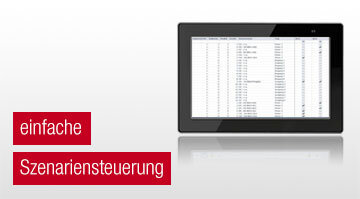- Joint closing of fire dampers in the event of dangerous conditions
- Convenient setup of trigger groups and quick assignment of participants
- Reliable implementation of statutory and private law fire protection requirements
The "plug-and-play"-capable BS2 communication system "Wildeboer-Net" for fire dampers has been expanded to include comprehensive scenario control. This allows trigger groups to be set up quickly and easily for the joint closing of fire dampers, whereby other participants such as smoke detectors, fans or warning signals can also be integrated. In this way, it is possible to optimise fire protection - for example by preventing the transmission of cold smoke or the precautionary sealing off of fire compartments when the ventilation system is switched off. For example, group control can be used to comply with both building and private law fire protection requirements - such as the VDI or VdS guidelines - which ensures greater legal certainty for building owners and planners.
The contracts of fire and business interruption insurers often contain safety requirements that go well beyond the statutory fire protection regulations. If these requirements are not adequately met, this can lead to problems with claims settlement in the event of an emergency. With the expanded Wildeboer-Net, the complex fire protection scenarios required for this can be implemented quickly and easily.
According to § 14 of the current Model Building Code (MBO 2002), built environments must be designed in such a way that the spread of fire and smoke is prevented. This protection goal is specified in VdS Guideline 2000, for example, which points out that fire dampers should also be triggered by duct smoke detectors or a fire alarm system to prevent the spread of cold smoke gases in the early stages of a fire. At the same time, VdS Guideline 2298 recommends setting up the control of ventilation and air conditioning systems so that they can be switched off automatically in the event of a fire and fire dampers can be closed in a targeted manner. According to VDI 3819, it should also be possible to preventively seal off fire compartments when the ventilation system is switched off.
To implement these requirements, trigger groups can be created in the extended system and fire dampers and other participants such as duct smoke detectors or fans can be assigned to these groups. Assigning the components to the respective group does not require any additional programming. Instead, the respective group participants can be conveniently selected via a table or existing trigger groups can be changed as required. These then react automatically not only in the event of a fire, but also in the event of faults such as bus interruptions.
Press release: "Simple scenario control for fire dampers" (21 July 2016)
